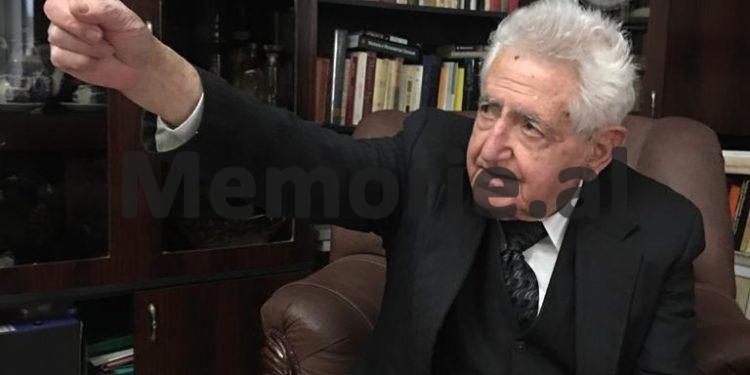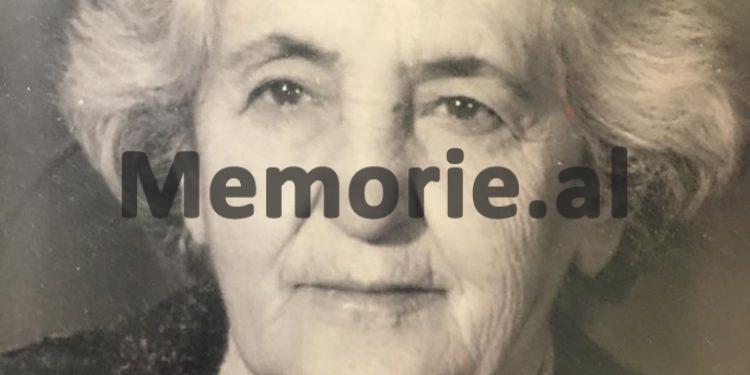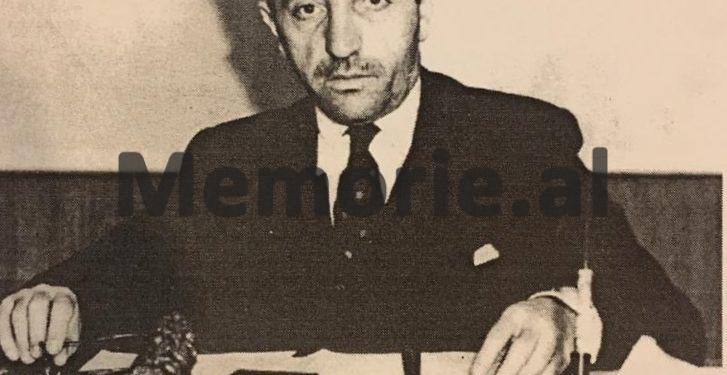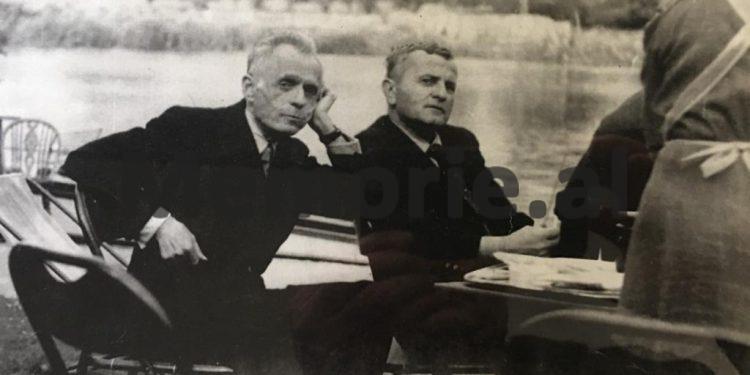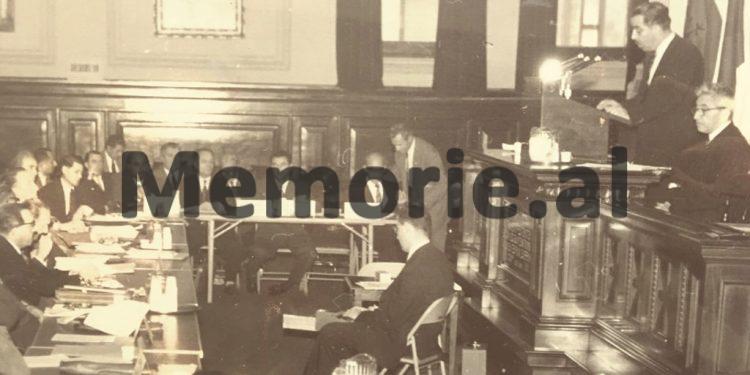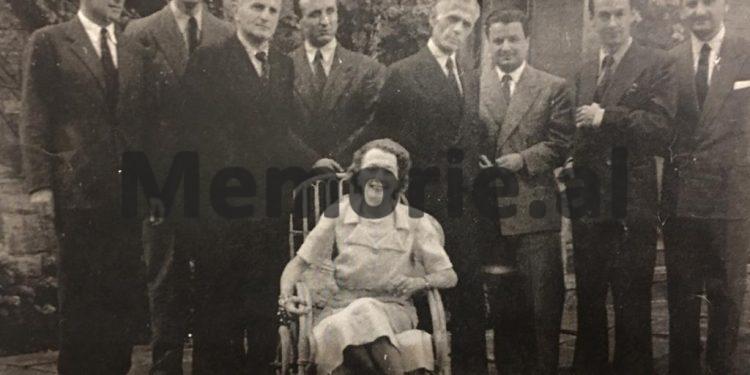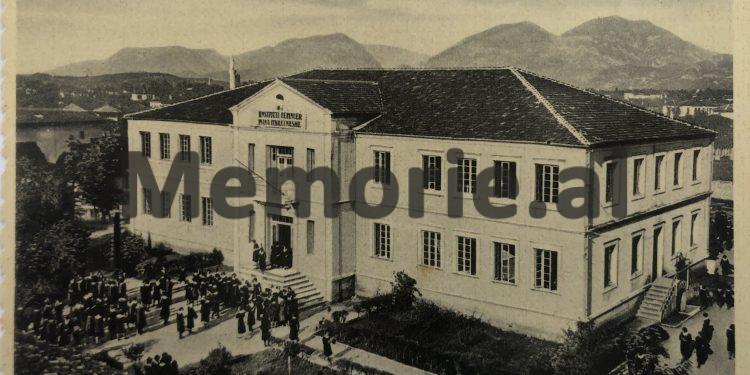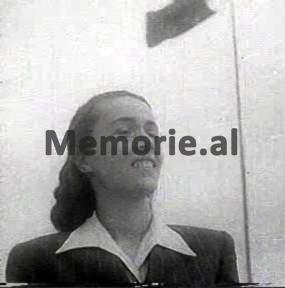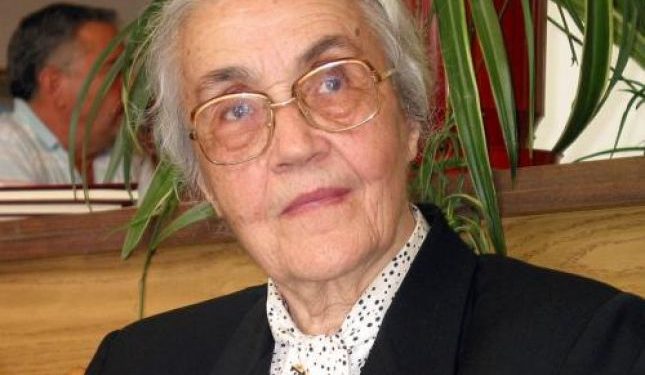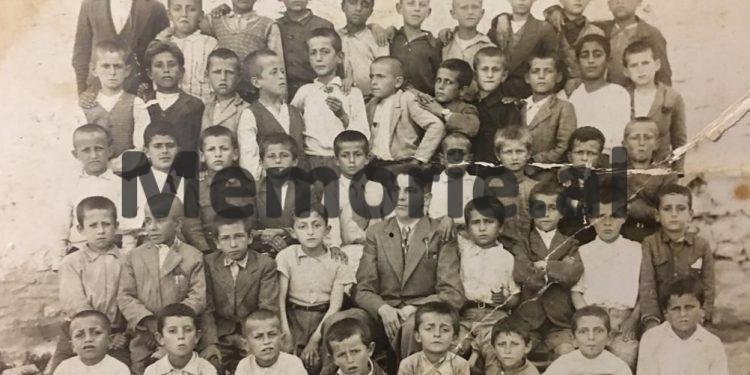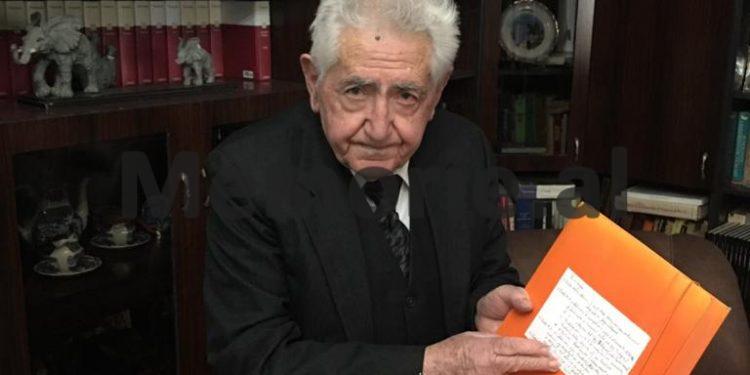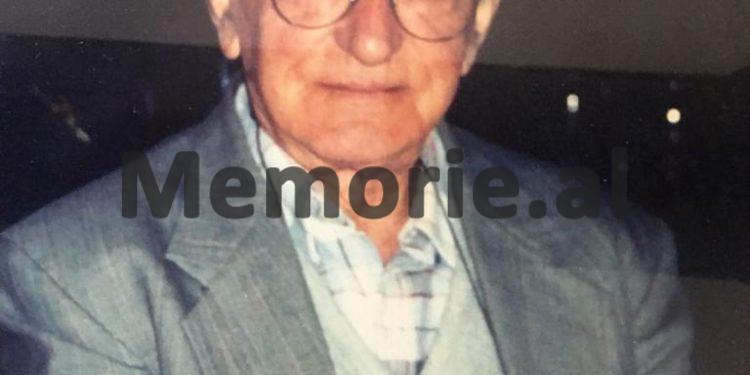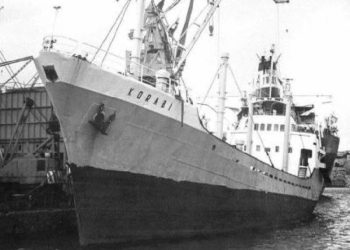Dashnor Kaloçi
Memorie.al publishes the obscure story of “Girls in Red Ribbons” which comes through rare testimonies of 90-year-old Tomorr Dosti, son of Hasan Dosti, former Minister of Justice in Mustafa Kruja’s government under Italian occupation and leader of the National Salvation Committee, which came out of the Mukje Conference, which left Albania with Mithat Frasheri in ’44 and settled in the US, where after Mithat’s death in 1949, he headed the Committee for many years. Free Albania ”backed by the US government, representing Albania at all the” Captive Peoples “Conventions held in Europe and the US.
The whole tragic story of the family of Hasan Dosti, the man who took Enver Hoxha in Shkodra in 1936 to pick up the remains of Çerçiz Topulli and Muço Qulli, while also reading his speech from the balcony of the Municipality of Shkodra, and for nearly seven years from the period of the Zog Monarchy and the occupation of the country, he kept in his home in Tirana, Nexhmije Hoxha, Nefo Puto Mufti, and Naxhije Dumen, classmates of his daughter, Shanisha Dosti, for whom years later came the film “Girls with red ribbons”!
How all Hasan Dosti’s children (five brothers and three sisters) suffered from prison and internment, from 1944 to 1991, starting with Shanishaya, who after two years of university studies in Italy in the Department of Pharmacy, was exiled in 1945, working casually on the channels of the Durres Municipal Enterprise, then ending up in the Kosovo of Lushnja prison for five years for “agitation and propaganda”! Why she and her siblings never refused to seek the help of Nexhmije Hoxha, who in 1945, when a classmate unknowingly went to the office and asked her to do something for Shano, telling her that they were dying for bread, she replied, “She’s not dead yet?” and left them in prison and exile until 1991 ?!
By the mid-1970s, the former leaders of the top leadership of the APL began to think of their “wars, feats and heroism” during the “Anti-fascist National Liberation War” that they had until then. made public only in historical-themed books or in some literary work, they had already evoked and perpetuated them in the cinematic, as they knew and knew well the magic of cinema and its impact on the people. The impetus for this became one of the “old comrades” of the War, originally from Kurveleshi, who, in a conversation at the Party house after seeing a War-themed film, about one of the “Heroes of the People” frozen in face to face and as he laughed, he said to Enver: “We’ve been fight there too, not just these …”! So it was after the “Guerrilla Unit” and “Eighth in the Bronx”, which had already been realized and aroused the jealousy of some “leadership companions”, that the film “Trails of War” was originally made for the story of Peza. Enver Hoxha was dissatisfied, as “the role of the Party did not work out well”, and in order not to stop the film, another thought was made and the film “The Decision” was made. In the meantime, “At the beginning of summer” was performed, which echoed the activity and activity of Hysni Kapo in Vlora Circuit, and a film was prepared for the Albanian Prime Minister, Mehmet Shehu, which was never produced because of the event that happened with the. Meanwhile, the historical themes in Albanian Cinematography continued with “Red Besa” (1982) and “Militant” (1984), where the activity of “friend Ramiz” during the Anti-fascist War was somewhat highlighted. Neither Nexhmije Hoxha, who had long contemplated and in the care of her “script” in 1978, “Girls with Red Ribbons”, in which “Red Ribbon Girls” was realized the activity and activity of some “friends” (wives of senior leaders), who from the period of King Zog Monarchy and Nazi-Fascist occupation of the country, had been boarding students at the Women’s Institute, “Nana Queen” , and under the “leadership” of his friend Nexhmije Xhuglini, had organized the first demonstrations and actions at the head of the Communist Youth. But unlike some films like “Guerrilla Unit”, “Eighth in Bronze”, “Early Summer”, “Decision”, “Militant”, “Red Besa”, etc., where there were some truths about the role of the “comrades of the leadership” during the Anti-Fascist National Liberation War, in “Girls in Red Ribbons”, the story seems to have turned “upside down”, distorting and manipulating everything!
First, before Nexhmije Hoxha was a “girl with a red ribbon”, she had been with a “black ribbon” as a member of the Fascist Party, which came out and became public only after the 1990s (from the former – Director of the Archive of the Ministry of Order, renowned historian, Kastriot Dervishi “), and secondly,” Miss Gajtani “the negative character in” Girls with Red Ribbons “, was not a spy girl as she loved and mourned, Nexhmije Hoxha, but one of her closest friends, for all the time they’ve been together at the Nana Queen’s Women’s Institute in Tirana, and quite the opposite of what is featured in that movie! She even not only never spied on her friends, the “girls with red ribbons”, but kept them with bread in her home, both during the period of the Zog Monarchy and during the occupation of the country, where even though they were “young Communists”, she hosted them at her home where they held meetings, while her father was Minister of Justice in the government of the time. But who is “Miss Gajtani”, what is her story, where has she lived and why has her sad past been kept secret and shrouded in mystery for nearly eight decades ?!
In this exclusive interview with Memorie.al, Mr. Tomorr Dosti, son of Hasan Dosti, the former head of the National Defense Committee who came out of the Mukje Conference in 1943, and the main exponent of the nationalist organization, the National Front, who in late 1944 was forced to he left Albania in retaliation for Enver Hoxha, and settled in the US, where he headed the Free Albania Committee for many years, funded and supported by the US government.
Whereas Mr. Hasan Dosti was emigrating as a political asylum along with one of the boys, seven other children, remained in exile and in prisons from 1944 to 1991, although they were supposed to be “martyrs’ families” after their mother and at the same time Hasan Dost’s wife was shot dead by the Germans on November 16, 1944, along with his brother, Kutbi Dosti.
In connection with this sad and tragic story of their family, with Mr. Tomorr Dosti who is the brother of Shanisha Dosti, the “girl with red ribbons”, Nexhmije’s former close friend at the Women’s Institute, “Mother Queen”, we have talked since the early 1990s when he was former deputy chairman of the Democratic Party and member of the Albanian Parliament, and then, but he never wanted to make it public in the press.
Mr. Dosti, already at the age of 90, but with an enviable health and memory, has preferred to remain silent as has been their family for three decades, which has been and continues to be it is a “Mecca” where all former persecuted and political prisoners of Albania have been “pardoned” since the fall of the communist regime.
This interview was only possible after our long insistence, and after some meetings with Mr. Dosti, these days that his brother Ernest (the last one still living) was separated from his life, and this is also due to the recent book of Nexhmije Hoxha, which has been followed by almost all the press for days. print and various online media.
Mr. Dosti, before we ask you about the story and the circumstances that you and your family have personally become acquainted with Nexhmije Hoxha, can you briefly say two words, what is the origin of your family?
We are originally from the village of Kardhiq in Gjirokastra, where the father was born on October 7, 1895. The first of the family, Dosti, was a priest, Pope Constantine, who lived sometime in the second half of the 15th century… Later the descendants of this tribe converted to Muslims, dividing into two branches: one was that of Delvina – Dosti – Hajdaraga – Delvina, and the other one from Kardiqi, where we come from our father, Hasan Dosti. This is the story of our father’s family origin.
Where is your father Hasan schooled?
He was first educated in Greece, in the Philippines, and then returned to his native village of Kardhiq, where he completed his primary education in 1907. What I’m telling you is that Dad left his handwritten and thankfully preserved, after Dad’s library was burnt three times with hundreds of volumes of books and documents as well.
What does Dad write in those memories about his schooling?
Here’s his recollection: “When I attended Greek school, during the summer months, I came to Kardhiq. That year and then, as usual, I sang with the village friends the heroic songs of Gjoleka, Lekursi War, Abdyl Frashëri, Ismail Qemali and others. Laberia’s heroic songs are history. In 1907 I attended classes, sometimes in the Turkish Gymnasium of Gjirokastra and sometimes in Ioannina, according to my father’s financial situation. In the years 1907-1908, I learned from Mihal Grameno, (when he came to Kardiqi with Cerciz Topulli), the Albanian script, according to the alphabet of the time. In 1912, I won a state scholarship by competition and attended French language studies at the Alliance Universalle Israel College in Ioannina. In 1914, just as I was preparing for my final year exams, I had to leave Ioannina after learning from some Gjirokastra that Kardhiqi was burned. This fate had been suffered by the Muslim villages of Gjirokastra and Korça by gangs of the Epirus government, announced on March 2. I arrived in Vlora in May 1914 ”.
How did his education continue?
It’s a long story, but short of it: In 1915, Dad attended a gendarmerie school that opened in Vlora, where he earned several degrees up to the first captain’s and thanks to some foreign languages he spoke, such as: Turkish, Greek, French, Italian and English, worked as a translator until 1917 and as treasurer of the Vlora Prefecture until 1919. From 1918, the father was in the role of treasurer of the “League of Boys” society headed by Petro Korcari as chairman and Avni Rustemi as secretary. In 1919 he returned to Gjirokastra as Treasurer of the Prefecture, and in 1920, the Government of Sulejman Delvina appointed him Secretary-General of the Prefecture, with Col. Tromara as Prefect.
How long did he work there?
In that capacity, his father worked until 1922 when he resigned after being married and had children (his older sister, Shanisha), and at that time fled to France to complete the studies he had discontinued in 1914.
And where did he graduate …?
After earning a French bachelor’s degree, (Bachelor), his father studied for five years in Law and Political Science in the Department of Economics and Finance, where he graduated in 1928. During that time pursuing his studies in France, he had contacts with Albanian emigrants who fled Albania after the events of 1924, that is, after Zog’s return to power, and when coming to Albania on holiday suspected of these contacts by the state authorities he was kept under observation for some time. At the end of his studies, his father prepared a thesis on Marxism, which he criticized in general, but failed to defend the thesis after the scholarship was terminated and he was no longer allowed to continue. But during his stay in Paris, he had the chance to meet many Russian immigrants, where he heard testimony of the horrors of the Bolshevik Revolution and of the civil war, which he would never have thought of again, that the future would be reserved the same fate.
When did your father return to Albania and where did he work?
After completing his studies, the father returned to Albania in 1928 and initially worked as a lawyer in Gjirokastra, and in that same year the “Sheep” Society was established, headed by Bajo Topullin and its father, Hasan Dostin, secretary. The purpose of creating that association was to help develop livestock, an activity that at the time was very important to the national economy. A year later, in 1929, the father was appointed a judge in Berat, and in 1931, he was appointed an Assistant Member of the Court of Dictation (Supreme Court) in Tirana. He served there until 1932, when this court, under the direction of Thoma Orollogai, became involved in a conflict with senior state authorities because that court overturned a ruling by the Shkodra court to the detriment of the property claimants. of the Vizier of Shkodra (Bushatlli). This took on a political character, and on the proposal of the Council of Ministers, King Zog decreed the dismissal of the entire Dictation panel, from which, as I said, the father left
Where did the father work after he left the Supreme Court?
The father returned to Berat to practice law, but after a few months of work, in 1932, he was arrested and charged with being involved in a covert anti-regime organization. It is about the “Vlora Movement”, where a large number of personalities were arrested and sentenced to trial, such as: Qazim Kokoshi, Skender Muço, Myqerem Hamzarai, Hysni Lepenica, Dr. Seit Bilali, Dr. Tare Libohova, Murat Terbaci etc., up to Ismail Qemali’s son Seit Qemali.
What was that organization and was your father, Hasan Dosti, really implicated?
“The Vlora Movement” is a long story that is not the place to stop here, but I am telling you what Dr. Tare Libohova, a close friend of the father, in a letter he made to King Zog from Istanbul, where he went to emigration after his release from prison, (initially sentenced to death), where, among other things, in the analysis he made to her events from the beginning and through to the litigation, he said: “That” Movement “was more like a spawn and a fruit of the fantasy of the Minister of the Interior, Musa Juka, his excessive zeal to win sympathy and to strengthen his personal position with King Zog”.
How many years was my father sentenced and when he was released from prison?
Hasan was sentenced to 15 years in prison, but only served about five years after he was released in late 1935, on the occasion of the amnesty granted by King Zog in honor of the November 28 holiday, the Declaration of Independence, where they were released. who had been sentenced to death.
After leaving prison, where did Hasan work?
The father returned to Berat again practicing law and in 1937, with the intervention of Thoma Orollogai (then Minister of Justice), was appointed President of the First Instance Court in Korça and did not complete a year of work there. he is appointed as a member of the Court of Dictation in Tirana (Supreme Court), the criminal branch where Agah Libohova was appointed as the President.
Let’s go back to what I was asked from the beginning, in what ways were you first introduced to Nexhmije Hoxha as a family?
Nexhmije Xhuglin, we as a family first met sometime in 1937 when we were living in Tirana, as she was a close friend and in a class with our older sister, Shannon (Shanisha Dosti), and both were students at the Women’s Institute, “Queen Mother” here in Tirana. Shano had been known to Nexhmijeen earlier, from 1935 -36, when we were still home in Berat, as they were both boarding in Tirana at the Nana Queen’s Institute of Women. And from that, Nexhmias, along with Nefo Puto (Arben Puto’s sister, Manush Myftiu’s wife), and several other classmates and school girls, regularly came to our house almost every week after they were boarding.
What about Nefo Puto ?
No, Nexhmije has been acquainted with our sister from Nefo, since with her father’s family, Qazim Puto, of Gjirokastra, her father had old friendships. Given this fact, during our time in Korça, we kept at home, Arben Puton, who was a student at that time in the French Lyceum of Korca, and the law of the time of the Zog Monarchy, conditioned that a student or boarding student, there had to be a family in that town where he learned to be a guarantor and to have custody. And these things were done with regular paperwork, where the family taking care of a student signed and held responsibility for him, mostly for the weekends he took home. I told you this, because when we would come to live in Tirana, our family, namely our father, Hasan, took custody of Arben Puto’s sister, Nefo Puto, (then Manush Myftiu’s wife), who as I told you was even in a class and close friends with our older sister, Shannon.
What about Nexhmija, your father Hasan signed, as did Nefo Puto?
I can’t say this correctly, but I think that without a guarantee, even verbally and not written as we had with Nefo Puto, a boarding student would not be categorically allowed to leave the dormitory without permission and go to one family. This was not allowed even in the upper cycle and no longer in the lower cycle of the “Mother Queen” Institute, where our sister Shano with Nefo Puto and Nexhmije had been from the beginning. There were very strict education regulations at the time that were implemented by the West.
Where did you reside at that time, so where was your house that Nexhmija came with Nefo Puto?
At that time we lived in a house that is located today between Kavaja Street and Durres Street, near the Ministry of Education, on its back, in the street “Kont Urani” as it was then, opposite the house of Dr. Harxhi. Or to be more precise, the house we lived in is located behind the former Tirana Court, where today there are several law studios, law offices, notaries, etc. It was a two story storey house and we were tenants there.
Who else came to your house from your sister’s friends except Nefo Puto and Nexhmije Hoxha?
Some other girls also came, such as: Naxhije Dume (wife of Nesti Kerenxhi, deputy minister and home affairs minister in 1945-49), Georgina Hodges, a girl from Saranda, Poliksene, I don’t remember her surname now, etc.
At that time, how many people did your family consist of?
We were in a lot: Father, mother (whom we called Ane), five brothers and three sisters. (Shanisha, big sister, d. Birth, 1922, Tefta, 1923, Victor, 1925, Lion, 1927, Veronica 1929, I, Tomorri, 1930, Leka 1931, and Ernest 1936. Along with us lived a uncle, Qutbi, who was a teacher.
How often did Najmiya come to your house and for how long?
Allegations with the other friends mentioned above came almost every weekend, but sometimes other days of the week, as we were home not far from their school, the “Nana Queen” Institute, and they took advantage of the opportunity. they came there easily. So, from school to our house, it wasn’t even a 10 minute drive, as they only had to cross the Skanderbeg Square and come either from Kavaja Street or Durresi Street.
Do you remember Nexhmija and other friends coming to your house?
I just don’t remember them, as I do now. I even went to school at the end of the week, or my brother, Victor, who was five years older than me, and he was assigned by the father to go and take his sister to the dorm. But when he was teaching, or playing with friends, he often sent me.
But why didn’t they come by themselves ?!
No, because it was a rule that if a person from the family who was the guarantor of them were not going to get them at the end of the week, they would not be allowed to leave the dormitory. Not only did we have to go and pick them up on Saturday after the class was over, but we also had to take them back to dinner on Monday or Monday morning, to the dormitory door. This was to keep the dormitory girls in control and secure of everything.
Do you recall any conversations with Nexhmije when you went to pick them up and take them back to school?
I was younger and I remember a little bit, but Victor, who was five years before me, was very “familiar” with them and remembered many conversations. Victor told us that after passing the girls, mainly Nefon to Nexhmije, that they both came to sleep on us on Saturdays and Sundays, as they shared the dormitory door, Nexhmija told him: “Tori, don’t forget to come take us on the coming Sabbath”.
To your sister’s friends, besides Nefo and Najmiya, you also mention George Hodges. It looks foreigner from the surname… ?!
No, Georgia was also Albanian, but it bore that surname after it had been adopted by an English family that was then in Albania. Even if I am not mistaken, the name was modified. Don’t get me wrong, Georgina was the sister of Zoica Haxho, the famous ballet dancer of the Opera and Ballet, who was a “Hero of Socialist Work”. Not certain how accurate I am about this and take me with reservations after almost 75 years have passed since then.
How long did that “ritual” last, so how many years did Najmiyah and Nefon continue to come to your house?
It’s been about seven years since we arrived in Tirana in 1937 until 1942-43, as they continued to come even after the Nana Queen Institute ended, as Sister Shano maintained her friendship with them.
As explained, in 1942 your father, Hasan Dosti, was Minister of Justice in the government of the then Italian occupation, while they, Nexhmije with Nefon and Naxhije Dumen, were already engaged in the Anti-Fascist Movement and the Communist Youth. How could they come to your home… ?!
It sounds unbelievable, but it is very true that they have come, since our sister also belonged to the Anti-Fascist Groups, most of whom had joined or were with the Communist Youth. And for this reason, as soon as Hasan’s father found out about our sister, Shannon, dealing with those things, that is, cooperating, or more precisely, being part of that group of girls with communist ideals, he dropped her off and sent her to study high in Italy in the Pharmacy branch. (Not staying there, but going and coming when he had the exams). And let me tell you the other fact, not only that, but George Hodges, has come to our house in a partisan uniform with a gun in his belt, and we have received and followed him as if he were our sister, Shano. The fact that those girls, namely the sisters’ friends were coming to our house, was acknowledged by Naxhije Dume herself, in her memoirs made public for years, where she wrote, among other things: “We, with Nexhmije Xhuglini, Nefo Puto, etc. , we had meetings at the house of the Minister, Hasan Dosti, because we had close friends, Shanishana, his daughter … ”. But I wanted to add that at that time these things were not looked at, namely partition; communist-ballist, with the look they saw after the end of the war. Enver Hoxha himself was staying at the home of his brother-in-law, Bahri Omari, who was foreign affairs minister and a senior exponent of the Nationalist Organization, the National Front. Memorie.al
Coming tomorrow




